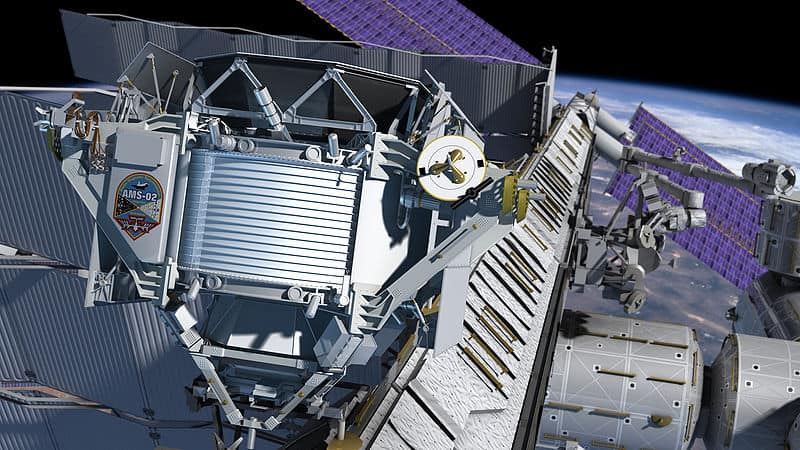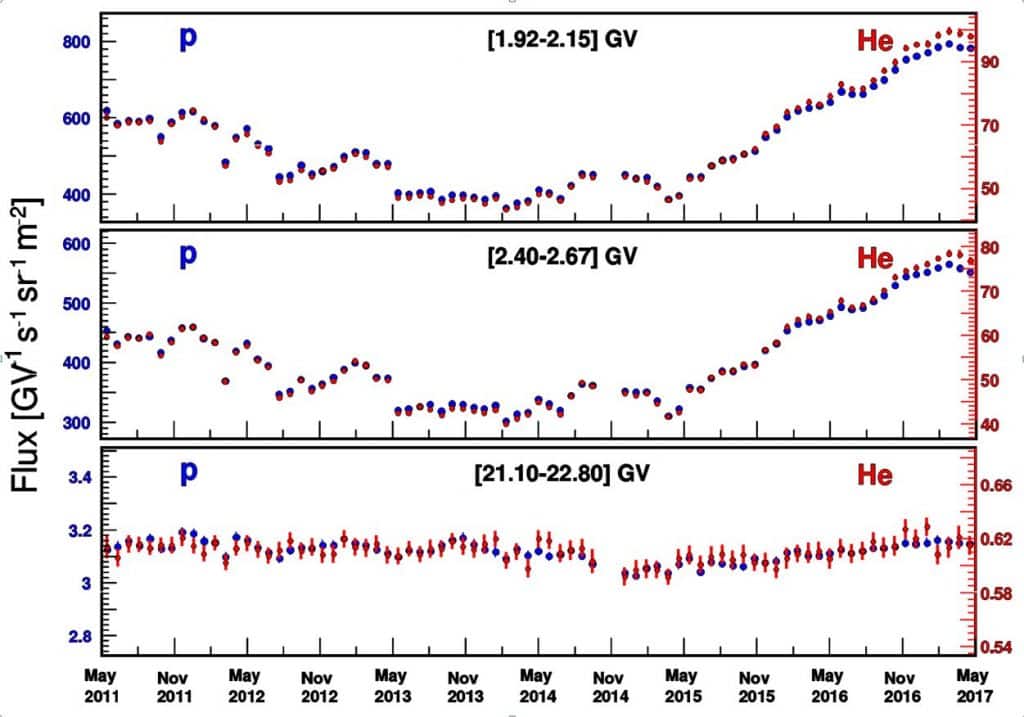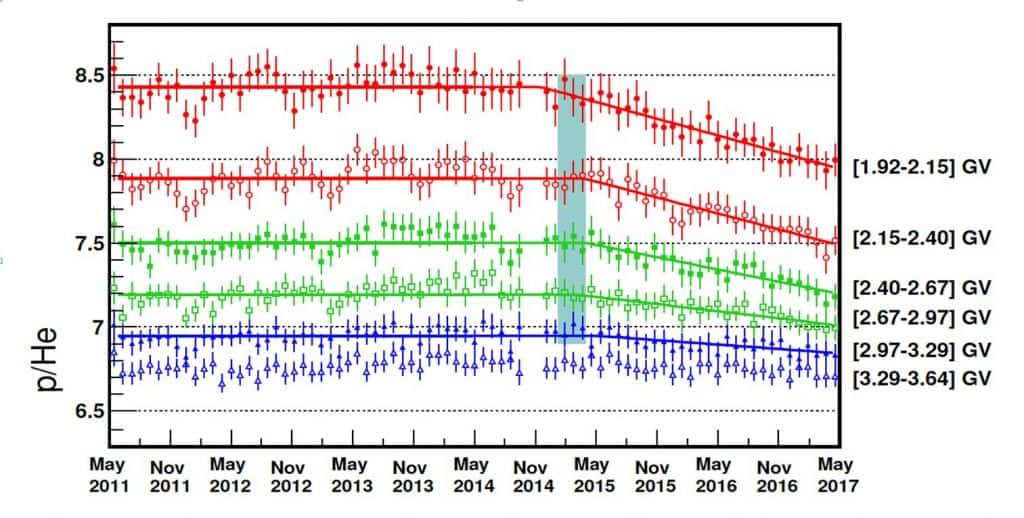Latest results from AMS uncover secrets of the heliosphere and the cosmos
A unique and unexpected scientific result from Professor Veronica Bindi and her team in the Physics department of the University of Hawai’i at Mānoa has been published in Physical Review Letters in July 31, 2018 (DOI: 10.1103/PhysRevLett.121.051101).
Dr. Bindi said ”It is so rewarding when, after years of study, you find something new and unexpected that challenges your beliefs. It makes you review our current understanding of the field, and it moves scientific knowledge forward”. Dr . Bindi also added “We want to thank our sponsors, especially the NSF (NSF CAREER grant NSF AGS-1455202) and Wyle Laboratories, Inc. (grant NAS 9-02078) for supporting us and giving us the opportunity to perform this important research
More details on Dr. Bindi and her team can be found at: bit.ly/amshawaii
This work has been sponsored by:
- Wyle Laboratories, Inc. grant (NAS 9-02078)
- NASA DATA base grant
- Heliophysics Living with a Star (NNH14ZD001N-LWS)
- NSF CAREER grant (NSF AGS-1455202)



